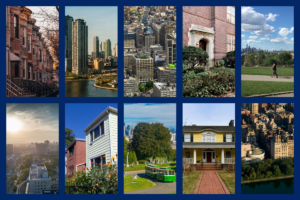Artists are trendsetters. Whether you’ve been exposed to the arts or haven’t, it’s about time you get familiar with where artists operate. Why should this be important to you? If you’re looking to be a savvy real estate buyer in NYC, you should be aware of the impact that artists have on neighborhoods and property prices.
Have you every walked through a neighborhood and seen beautiful murals graffitied on walls? This a telltale sign that artists have taken up residence in the area. There are probably coffee shops, boutiques and vintage stores in the area as well.
There are numerous cycles that attract artists to neighborhoods and eventually turn those neighborhoods into real estate gold. We’ll outline the process below.
1. An industrial neighborhood loses its industry
It’s happening all across America. Think of where manufacturing is going. At the turn of the 20th century (1900s), NYC was bustling with industry. Shipping, distribution, warehousing and manufacturing were the lifeblood of this city. Numerous neighborhoods were built up to support these burgeoning industries. Think of neighborhoods like SoHo, Tribeca, Chelsea, Dumbo and Williamsburg just to name a few.
When industry started drying up and the city became more of an exchange for human capital rather than physical goods, many of the properties that housed these industries were just left to rot. Often times this sort of neighborhood attrition is replaced by seediness and illicit industries.
2. Artists look for affordable work/live studio space
As the saying goes, one person’s garbage may be another person’s treasure. While industry disappearing from a neighborhood comes to the detriment of hardworking employees, it also might come to the great pleasure of artists looking to hunker down in a new part of town. Artists aren’t sitting there waiting for a neighborhood’s demise. Rather, this is just the natural course of events that take place over many years. When a neighborhood becomes affordable and has great loft options for artists, they’ll begin staking out their claims. Over time, artists develop strong communities within neighborhoods.
3. Non-artists find out about the new artist’s community
Once the word is out about a new fledgling artist community, others will naturally gravitate towards these neighborhoods to check them out. Artists will often hold open studios to attract visitors to the area and check out their work and installations. Additionally, new outposts like coffee shops, bars and restaurants will have likely started setting up over time as well.
If you’re looking for an up and coming neighborhood in NYC, seeing art, coffee shops and the development of dining options is a telltale sign of a neighborhood in flux.
4. Non-artists want to live in a neighborhood known for its creatives
When investment bankers start wanting to live in an artist’s enclave it represents a tipping point for the neighborhood. Consider when neighborhoods like Tribeca or SoHo started attracting people that work in banks as opposed to the starving artists looking for cheap space. The combination of expansive loft spaces with the unique historic vintage results in incredibly desirable places to live. Slowly but surely, with an influx of new residents, the price of real estate starts creeping upwards.
5. Developers begin building rental buildings and condos
The demand for the neighborhood gets so hot that developers start buying empty plots of land or even go about rezoning and demolishing existing plots to begin building rentals. Once they’ve released the inventory and prove out the existence of a strong rental market, developers begin building boutique condos. This is always a great time to get into the market, as these condos will be much more affordable during this time than they will be several years down the line. From my experience of flipping apartments in NYC, I have personally benefited from this exact tactic by buying a condominium in Bushwick and selling it 1.5 years later and netting a 105 percent cash on cash gain.
How I Flipped My Way From a Small Studio to a 1,300-Sq Ft Loft
6. Artists get squeezed out
This is the last phase, and it’s truly a shame that it happens. When neighborhoods become so trendy that developers and new residents take over, the artists get pushed out. They have to start seeking out neighborhoods deeper in the boroughs. It used to be that artists could go from Manhattan to the Brooklyn waterfront and places like Dumbo or Williamsburg. The waterfront is completely out of reach as it’s been completely developed by luxury condos and warehouse conversions. Artists start creating communities elsewhere and help make the next neighborhood they find a hotspot, starting the cycle all over again.
Key Takeaways
If you’re looking for real estate opportunities that blend the excitement of an evolving neighborhood with an artistic edge, it makes for the perfect opportunity to buy into an appreciating property market. How do you go about identifying neighborhoods like this and the real estate opportunities that await? Ask your friends and colleagues what they are seeing. Pay attention to neighborhood blogs. And also, working with a real estate agent who has a pulse for these types of trends is a good first step.
Related:









